Burdock root harvest time (Growing burdock root from seed) – Arctium lappa burdock how to grow?
How to grow burdock root in organic cultivation. The burdock root (arctium lappa) seeds sown in early August are ready for harvest.
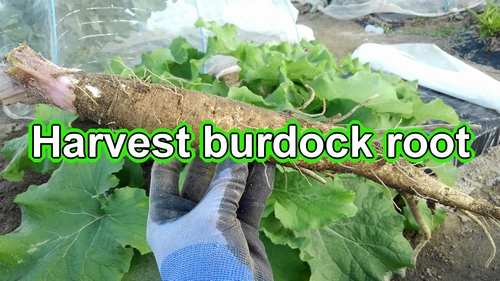
When is the time to sow and harvest burdock root?
Burdock root (burdock gobo root) growing has two patterns. Sowing seeds in spring, growing in spring and summer, and harvesting in summer. Or sowing seeds in autumn, growing in autumn and winter, and harvesting in winter. This time, I sowed the burdock seeds in autumn, so the harvest time is in winter.

Summary of burdock root cultivation:soil preparation and planting seeds (How to grow arctium lappa burdock)
When to started growing burdock gobo root? I started growing burdock root (arctium burdock) in August. I prepared the soil and sowed the seeds around the same time, in early August.
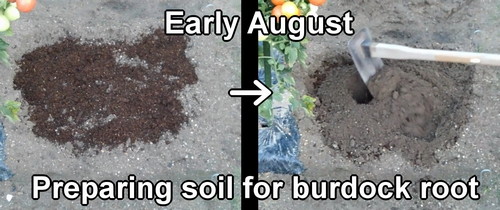

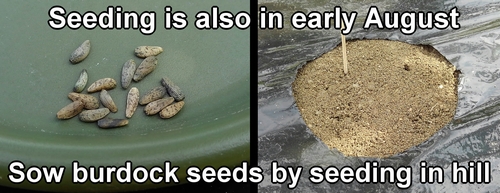
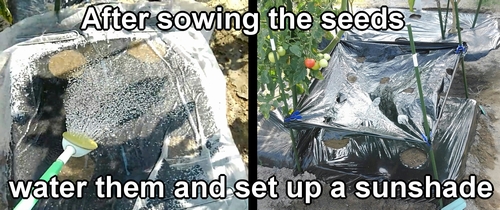
When does burdock root germinate?
Burdock root (arctium burdock) germinated about a week after sowing. Since burdock seeds are hard, it took some time for the sprouts to appear. Where the burdock didn’t sprout, I sowed new seeds. (If burdock doesn’t germinate after about 10 days, I think it’s better to re-sow the seeds.)

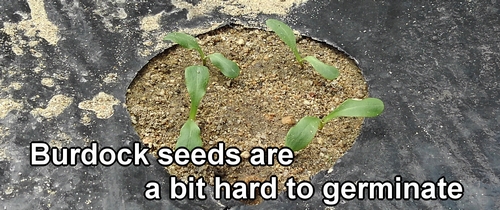
For vegetables grown from seeds, it’s common to sow more seeds, then thin them out after germination. But with burdock root, we don’t thin them. (In arctium burdock growing, letting the plants compete with each other helps them grow better.)
Summary of arctium lappa burdock root cultivation:Side dressing for burdock root (How to grow burdock gobo root)
When is the best time to side dress burdock root?
About one month after sowing burdock seeds, it’s time to fertilize. (This year, the fertilizing time for burdock was about 40 days after sowing, in mid-September.)
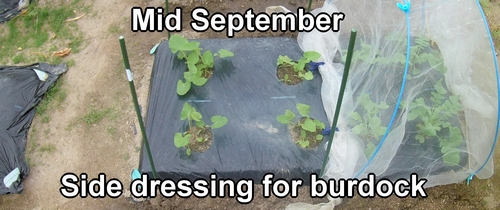
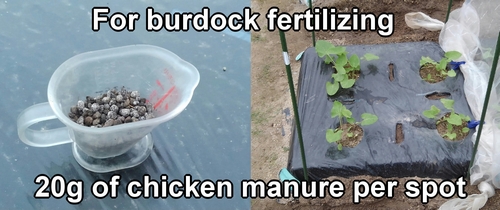
How to do side dressing for burdock root?
Burdock root (arctium lappa burdock) is a vegetable that needs fertilizer, so I add fertilizer regularly after the first time. I fertilize about once a month and continue until harvest.
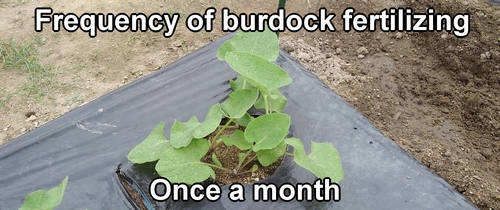
Burdock root grows slower than other fall and winter vegetables. Even after many days, the leaves don’t grow quickly, so it might be frustrating, but be patient and watch over it.
About one month after the first fertilizing, in mid-October, was the second fertilizing for burdock root.
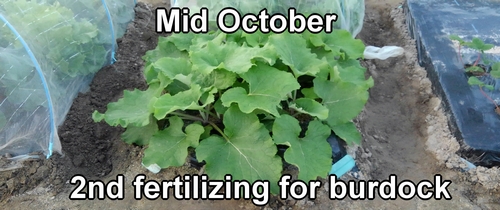
More than two months have passed since sowing the burdock seeds, and the leaves and stems have grown quite large. The leaves are about 20cm (8 inches), and the stem thickness is about 6mm (0.23 inches).
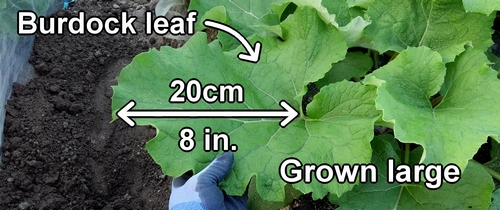

The leaves of the burdock are fortunately not being eaten by insects, but it seems like they are being pecked by sparrows. When I asked the farm staff, they said that birds (like sparrows and bullfinches) also eat vegetable leaves. I wonder if burdock leaves are tasty? From a human’s point of view, I think nuts or rice ears would be tastier.

About one month has passed since the second fertilization of the burdock root, and it is now mid-November. The growth of the burdock seems to be going well. However, aphids have started to appear on the burdock leaves, so I will not apply the third fertilization and will wait a little longer.

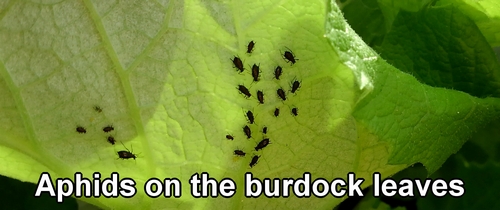
There are aphids on the burdock root, but ladybugs are becoming more noticeable. Ladybugs are natural enemies of aphids. They probably came to target the aphids on the burdock leaves. (Ladybug larvae also eat aphids, so they are helpful for pest control.)
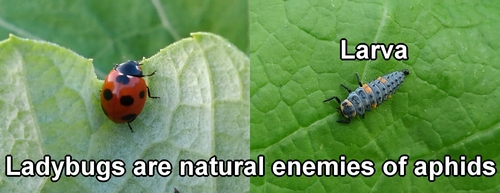
The stems of the burdock are getting thicker. The burdock I planted in early August is almost 100 days old. For short-rooted burdock, the growing period is about 90 to 100 days, so I think it’s almost time to harvest.

Summary of burdock gobo root cultivation:Harvest arctium burdock (How to grow burdock root)
When is the harvest time for burdock root?
Late November. It’s time to harvest the burdock.
How to harvest the arctium burdock root?
The method for harvesting burdock root is to first cut off all the leaves of the plant you want to harvest. (This makes it easier to harvest the burdock root.)
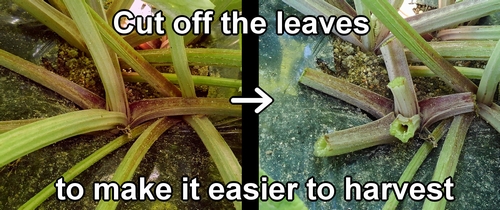
Next, dig deeply to expose the roots of the burdock. Be careful not to break the burdock root, as it may snap if you pull it out.

Although it’s a short variety of burdock, the roots have grown about 30cm (1 foot), so you need to dig quite deep. Once you’ve dug enough to see how far the root has grown, carefully pull it out to harvest. (Be careful not to break the burdock root you’ve worked hard to grow.)
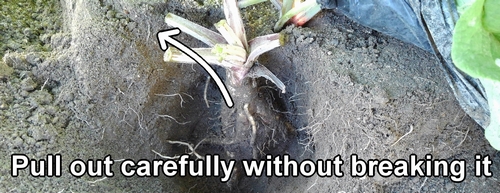
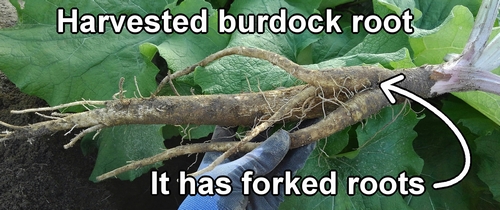
In open-field growing, harvesting burdock root takes time, but it gives a special sense of achievement, different from other vegetables. This time, the soil was soft and easy to dig, but if the soil is hard, harvesting might be difficult.
The harvest time for burdock root continues until all the planted crops are harvested. Fill the holes where you harvested to prepare for the next harvest. This ends the burdock root harvesting work.
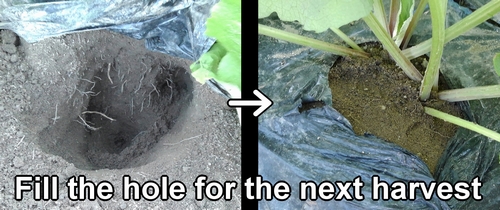
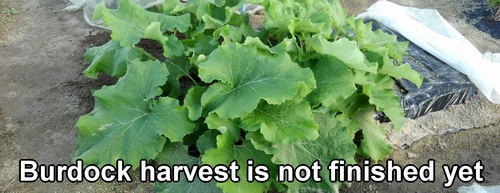
Following is the video for how-to. English subtitles are available.


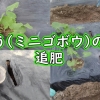

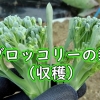



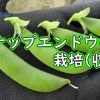




ディスカッション
コメント一覧
まだ、コメントがありません